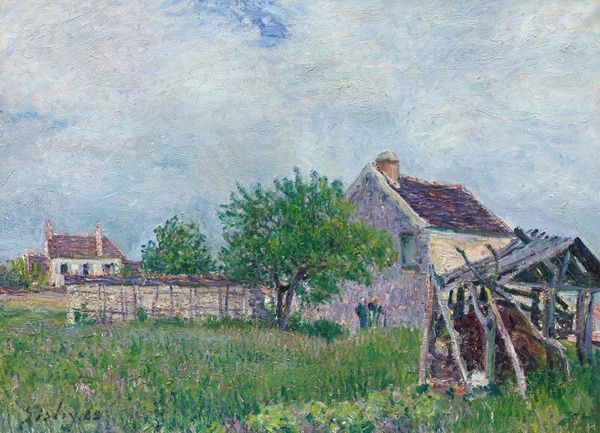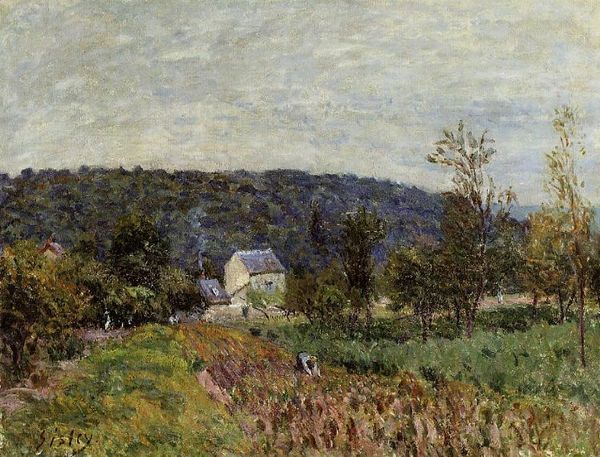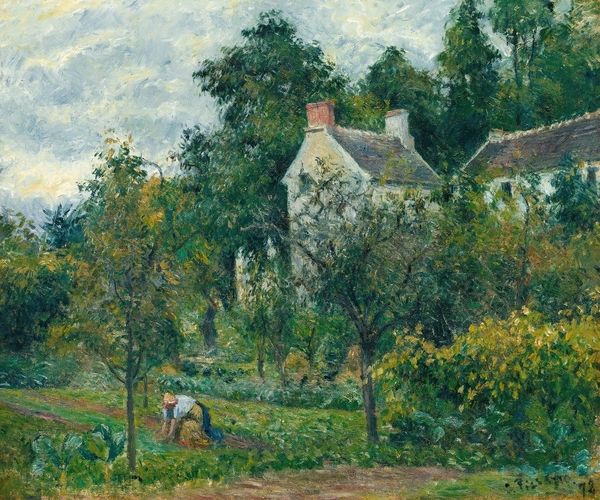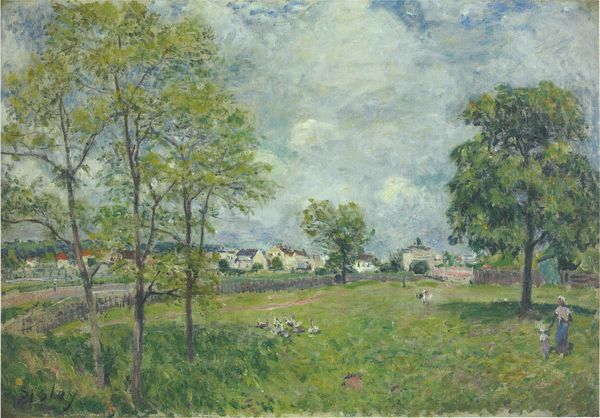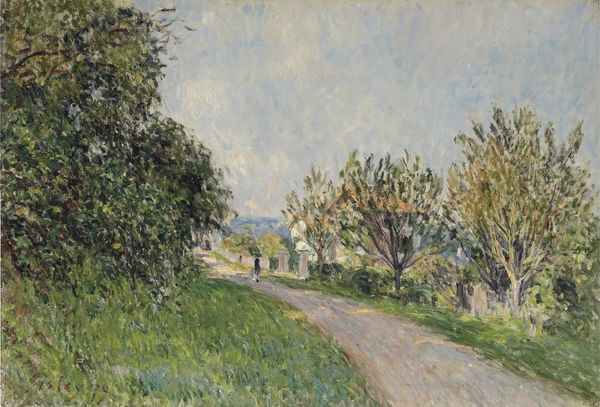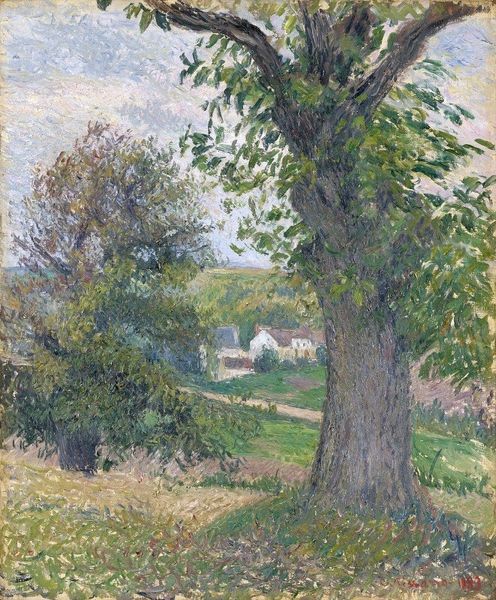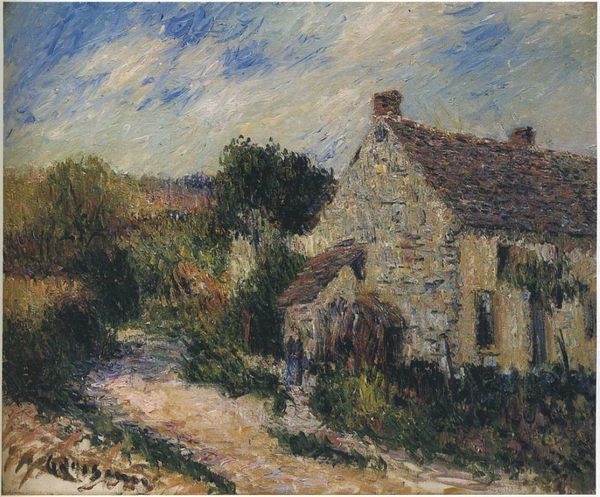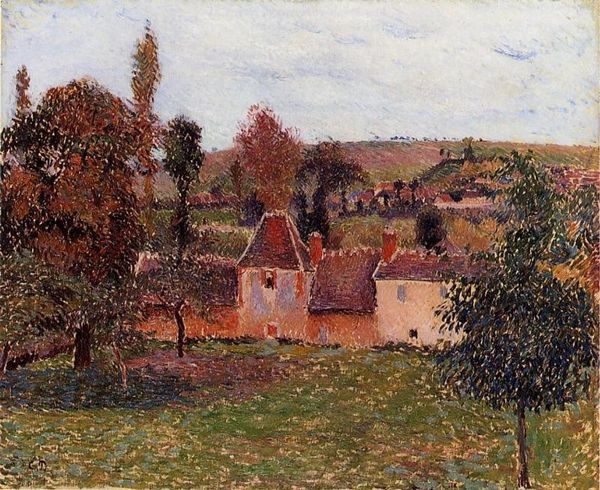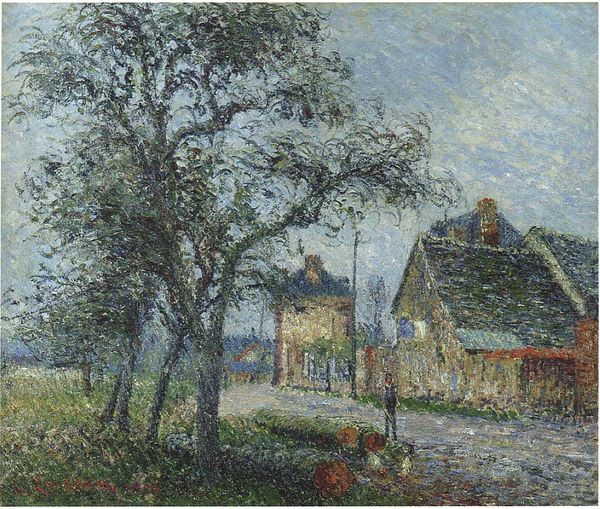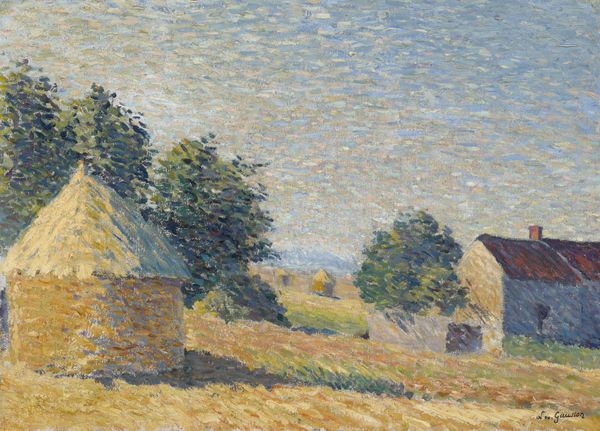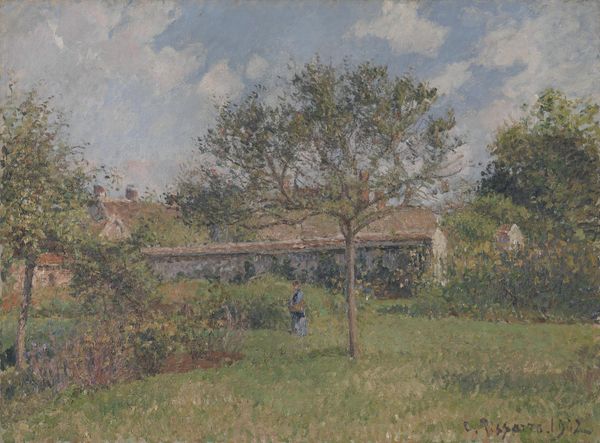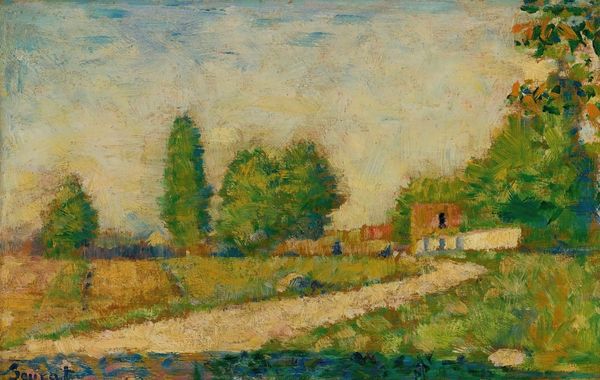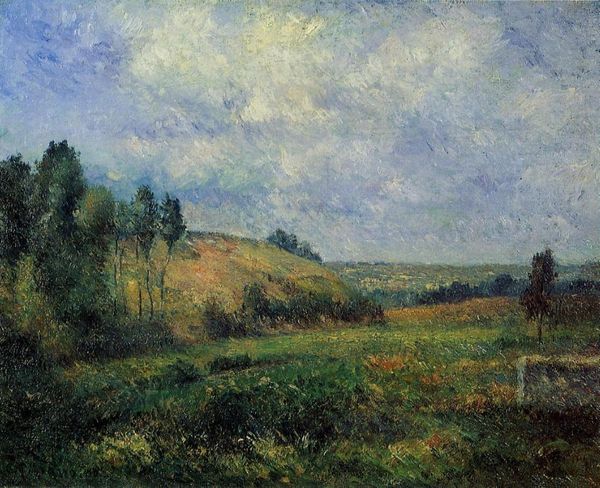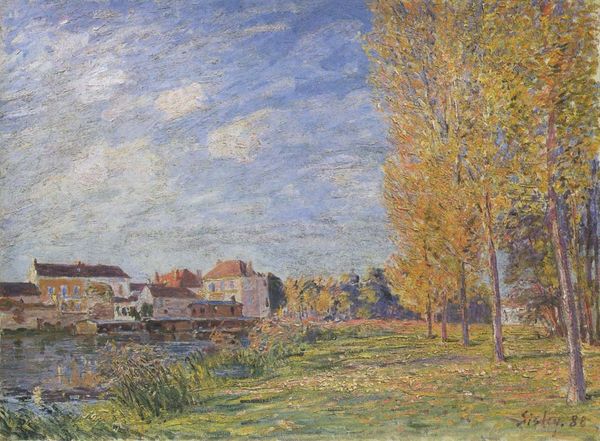
painting, plein-air, oil-paint, impasto
#
painting
#
impressionism
#
plein-air
#
oil-paint
#
landscape
#
impressionist landscape
#
oil painting
#
impasto
#
cityscape
#
genre-painting
Copyright: Public domain
Editor: This is Alfred Sisley's "Springtime," painted in 1889. It's an oil painting, and it feels very light and airy. The brushstrokes are so visible, especially in the sky. What do you see in this piece? Curator: I see a potent statement on labor and the everyday lives of rural workers in late 19th-century France. Look at the impasto, how thickly the paint is applied. It's not just capturing light; it's a physical representation of the effort involved in depicting this scene. Sisley isn't just showing us a landscape, but hinting at the hands involved in its creation – his and perhaps those toiling in the fields. Consider also how the industrial revolution was rapidly changing society. Do you think that’s relevant here? Editor: Absolutely! I hadn't thought of it that way, but you're right. The painting highlights the contrast between the idyllic rural scene and the encroaching industrial world. Could the visible brushstrokes, and the obvious materiality, almost be a political statement? Curator: Precisely. By foregrounding the material reality of the painting itself, Sisley draws attention to the act of creation, of human intervention. He’s subtly challenging the idea of art as purely aesthetic, connecting it to labor and the means of production. What might someone consuming this art at the time read into that, or push back against? Editor: That's a completely new perspective for me. It really makes me think about what was going on in the world at the time Sisley made it and the art market itself. I hadn’t realized how the technique itself could have that depth of meaning. Curator: Exactly! By exploring materiality and production, we find art deeply entwined with social realities. It goes beyond pretty scenes and reveals underlying dialogues. Editor: Thank you for offering an opportunity to observe how materials, method, and concept are inseparable and influence one another, deepening our experience. Curator: Indeed, a closer observation of the artist’s work challenges us to question established perceptions of the artist’s time.
Comments
No comments
Be the first to comment and join the conversation on the ultimate creative platform.
